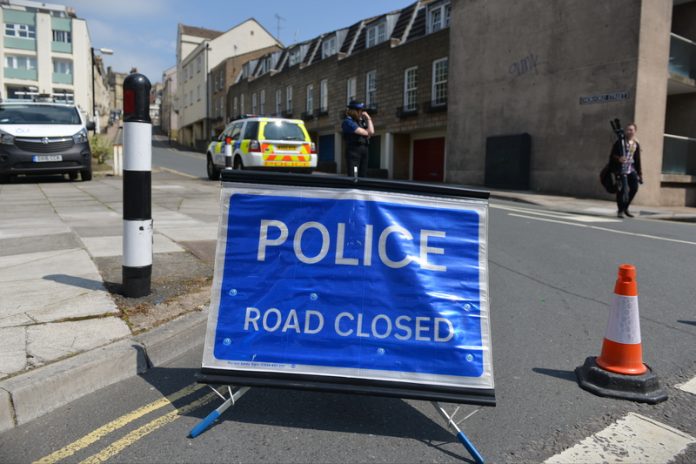Gavin Hepburn, Director at ATG Access argues that security needs to be improved to protect against all vehicle attacks – intentional or otherwise, in this opinion article
Throughout 2017, Europe fell victim to a series of tragic terror attacks that shook the western world. In April, an assailant drove a truck towards civilians in Stockholm. Then in June, a similar attack occurred on London Bridge, as again a vehicle was used to drive into pedestrians. And finally, in August, a van was used to harm pedestrians along the busy Las Ramblas in Barcelona. Moving into 2018, the situation has only become more complicated, with security officials finding it even harder to predict and prevent future attacks. This is because not all vehicle attacks are the acts of terrorists looking to wreak havoc.
So far this year, two attacks have been carried out by individuals who have had no terrorist intentions or affiliations – one in Canada’s capital city of Toronto and one in the German city of Muenster. Both incidents have highlighted that whether accidental or intentional and whatever the motive, future incidents can never be ruled out and improved safeguards are needed to protect crowded public areas.
What security measures are currently being used to prevent further attacks from taking place?
With attacks on the rise, governments are looking for urgent solutions to protect busy public spaces, such as promenades, urban squares, shopping streets and main café areas, which are increasingly becoming the primary target for these types of incidents. When large groups of people are gathered in one area, attackers can create a lot of damage in a short period of time using just a vehicle.
One security method that is proving popular with officials to safeguard these spaces is the installation of heavy-duty concrete barriers that can stop hostile vehicles in their tracks. These large barriers have already been installed across the globe, noticeably at locations that have previously fallen victim to an attack. Just days after the attack in Toronto this year, the concrete deterrents were installed at train stations and key public hotspots to prevent hostile vehicles from making contact with their targets.
Meanwhile, following the vehicle attacks on both the Westminster and London bridges, long concrete barriers have since been installed that span the full length of the bridges on either side. The aim is to prevent vehicles from mounting the pavements and going on to inflict irreparable damage or loss of innocent life.
But it wasn’t just areas that had already experienced a terror attack that started to take preventative measures following the surge in vehicle incidents in 2017. Despite the increasing terror threat, the British public refused to let the fear of future attacks stop them from enjoying the festivities at Christmas – 47% still wanted to attend inclusive public events, such as Christmas markets, as long as visible bollards and barriers were put in place to protect the perimeter. In response, several UK councils installed concrete barriers around the perimeter of their Christmas markets to safeguard the events.
While the barriers do prevent vehicles from causing harm, they are not without their issues. Due to their size and crude appearance, they could act as a reminder to civilians that an attack is always likely, leaving the public feeling uneasy in their surroundings.
Alongside being aesthetically unappealing, these large barriers can also be potentially dangerous. In some cases, cycling lanes and pathways have been narrowed to make way for these huge structures. The barriers on Importantly, temporary HVM barriers have been Westminster Bridge are a prime example, as cyclists designed to be permeable, meaning both pedestrians are now having to cycle close to traffic because of the and cyclists can flow easily in and out of the systems. barriers’ obtrusive presence.
Are there more effective solutions available?
The primary purpose of physical security measures is to protect, but this does not mean that they should make people feel uncomfortable or create a ‘fortress mentality’. Security officials should be exploring solutions that are not only effective, but that can also blend into the background or fit around the existing infrastructure.
Given the high terror alert, the security industry has been working incredibly hard to develop a range of temporary hostile vehicle mitigation (HVM) barriers that are aesthetically pleasing, but also capable of bringing a large vehicle to a standstill. These barriers can be customised with symbols and slogans to help them fit into their surroundings – so, say if the barriers were installed at the recent royal wedding in Windsor, the barriers could have been decorated with royal murals, so as not to draw unneeded attention from the public.
Importantly, temporary HVM barriers have been designed to be permeable, meaning both pedestrians and cyclists can flow easily in and out of the systems. And as summer is now upon us, these barriers could be ideal to use when securing temporary pop-up events, such as farmers’ markets and music festivals – events that play an integral part in making the UK more inclusive and diverse.
Sadly, vehicle attacks seem to be rising in popularity, not just from terrorists but also from individuals that just wish to cause harm. As a result, an attack can never be ruled out. With busy open areas now the new target of choice for attackers, effective solutions must be put in place that can keep people safe, whilst not creating greater levels of fear.
Gavin Hepburn
Director
ATG Access
Tel: +44 (0)8456 757 574











